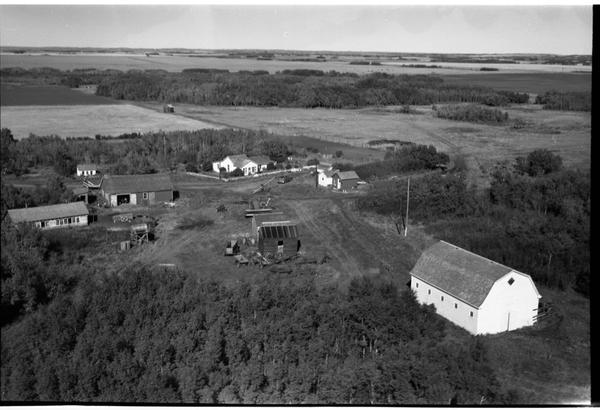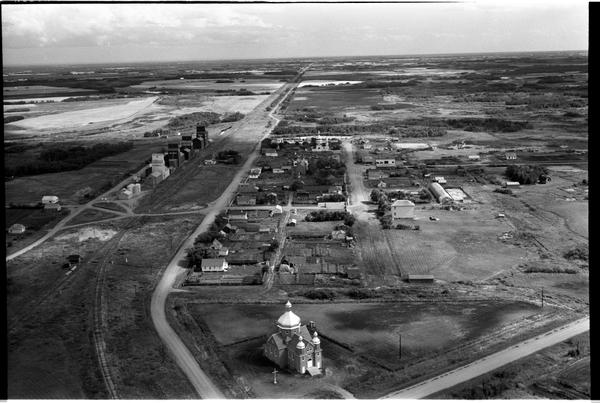The Challenges of Aerial Photography
Howdy's aerial photos are remarkable in their clarity and quality, especially given how difficult it was to take them. Most of Howdy's photos were taken from a Piper J-3 Cub, a small plane used to train military pilots during the war. The plane was bought by many veterans post-war because it was affordable and versatile. Howdy took up aerial photography in 1952, after purchasing a Kodak Medalist II camera and consulting with a local photographer in North Battleford. Howdy had no formal training in photography but was working with high-quality equipment and an innate artistic sense. Before setting off on a photography flight, Howdy would map out his intended flight path. He would choose a township and draw out the thirty-six sections it contained, keeping track of range and township numbers. The resulting map was attached to a makeshift clipboard which he strapped to his right thigh, on which he would note locations of farms and towns that he photographed.

The resort village of Cochin, Saskatchewan
However, keeping track of the where his photographs were taken was certainly not the most challenging part of the process. Taking the pictures was much more difficult, considering that the plane was constantly in motion. To get a clear shot, Howdy had to slow the plane to around fifty miles per hour. He also had to decide on the angle and factor in the location of the sun. He then had to adjust the aperture of the camera manually and choose an effective distance from which to photograph his subject, as there was also no zoom on the camera. In addition to these factors, Howdy's camera weighed over three pounds—too heavy and bulky to operate with one hand. As a result, Howdy would use his knees to hold the stick steady, controlling the bank and pitch of his aircraft, while allowing the plane to essentially steer itself. Once in place over his subject and he had adjusted the camera's settings, Howdy had to open the plane's window and lean over, bracing against the door to hold the camera steady, careful to avoid getting any part of the plane in the frame. The resulting images are remarkably sharp, clear, and detailed.

The small town of Wroxton, Saskatchewan
From 1952 until 1961, Howdy took thousands of pictures of towns and farms all over Saskatchewan and beyond. Discover the photographs by browsing or searching this site!
- Source:
- Waiser, W.A.. Portraits of an Era: The Aerial Photography of Howdy McPhail. Fifth House, 2010.

